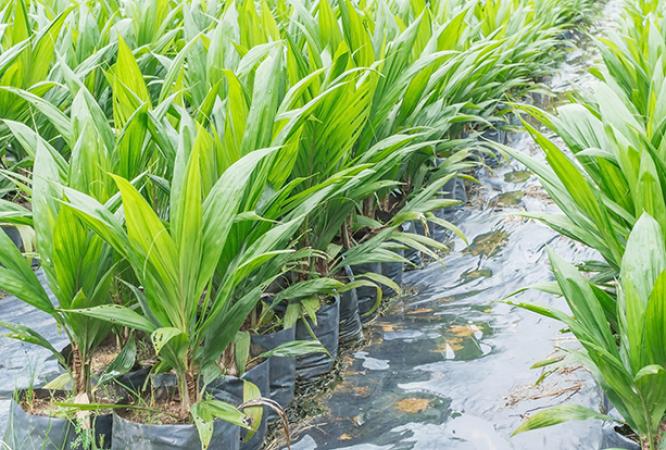Gunns set to reap input, production, operational benefi ts with Multicote fertiliser for seedlings
AUSTRALIA’s largest integrated hardwood and softwood forest products company, Gunns Limited, is looking forward to input savings as well as production and operational benefi ts in its plantations following the successful trial of a Controlled Release Fertiliser (CRF) with young seedlings.
Gunns manages about 160,000 hectares of plantations in Tasmania. It also operates one of the largest nurseries in the country, with a capacity of 21 million seedlings, at Somerset on the Tasmanian north coast. Breeding, Nursery and Research Manager Chris Dare said the nursery previously comprised mostly Eucalyptus nitens and globulus species, however today the focus has broadened to include radiata pine. Chris said the company had traditionally applied 100-200 grams of Di-Ammonium Phosphate (DAP) 15 centimetres away from seedlings at planting, but began considering CRF products for the starter application following positive reports in Chile several years ago.
He said the company was initially sceptical about the performance of CRF products, but was reassured following several internal research trials testing a broad range of brands up until its use of a polymer coated CRF product in July 2009. In subsequent trials of various polymer coated CRFs, including the Multicote product from Haifa, Multicote was the equal best performer in two different trials.
The Multicote products are based on fertiliser granules with a soluble nutrient core, surrounded by a polymer coating which can be adjusted during the manufacturing process to give longer or shorter release of the nutrients. Typical release periods range from two months to 16 months. Haifa’s CRFs also differ from many others because their release rate is governed by temperature, not moisture. This is important in ensuring the nutrient being supplied to the plant is not lost during periods of high rainfall or over-watering.
Assisted by Ben Grubb of Elders Rural Services, Gunns implemented replicated plot trials comprising 30 trees per treatment, with more than 900 trees in each trial at low and high elevation sites. These compared the Multicote with a range of other CRF brands as well as the traditional DAP treatment. “We trialed the Multicote NP and NPK and the NP product came out really well,’’
Chris said. “We found at the low elevation site that the trees responded well and even though the growth at the high elevation site wasn’t the same, the Multicote was still the best – also against the DAP. “The trees all responded positively from the treatments, but those that received the Multicote kept going. The Multicote had more N and P than the other products and its controlled release spectrum seemed to be very good – it was releasing at the right time for our conditions. “The sooner we can get our seedlings established the better. It helps reduce the impact of browsing from rabbits, wallabies, hares and possums, which also means less browsing control and impact on the ecology.
“The Multicote is also easy and uniform to apply and there is not the threat of burning seedlings as with the previous DAP treatment. Survivability is much better with the Multicote.’’ Due to the signifi cantly reduced fertiliser volume being handled compared with the DAP, Chris also anticipates logistical and occupational health and safety benefi ts, as well as reduced risk of nutrient leaching. “There will also be less reason to spray herbicides for weed control and the quick and more even tree growth results in a more homogenous plantation, meaning less supplementary planting later.’’
With the support of internal research, Gunns has confi dently made a transition to the use of Multicote through Elders Rural Services for Tasmanian plantations. Chris said the company had recently collected 12-month measurements from the trials and the Multicote plots were still performing well. Meanwhile, the success of Multicote has now prompted Gunns to trial Haifa’s Poly-Feed (Greenhouse Grade) NPK water soluble fertiliser for fertigating in its nursery.






